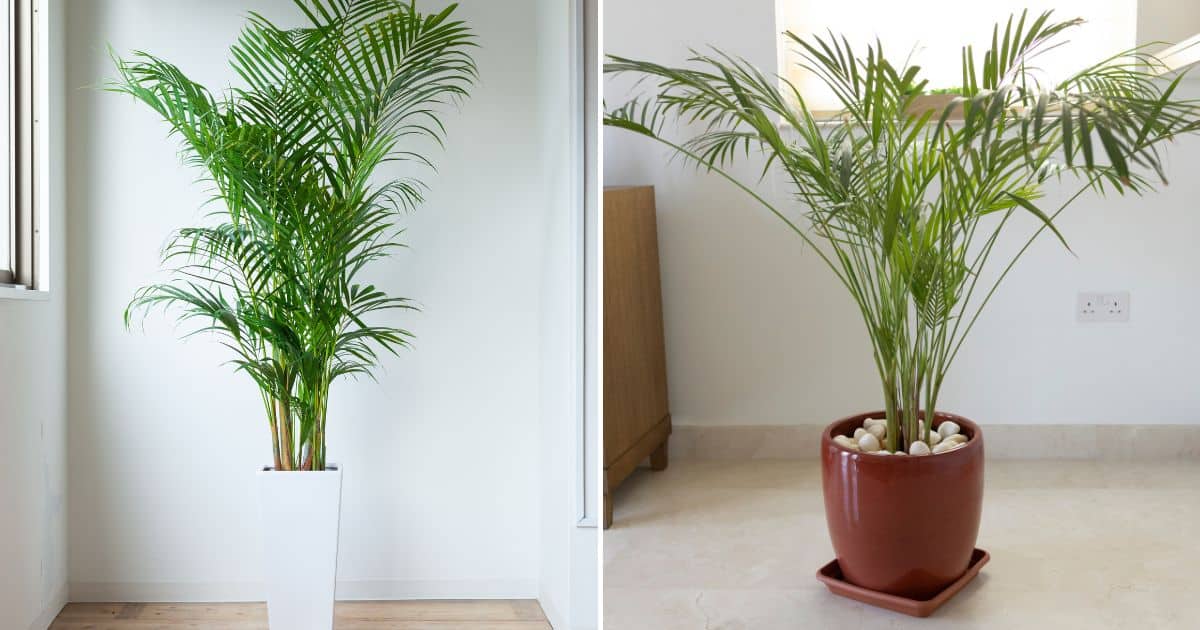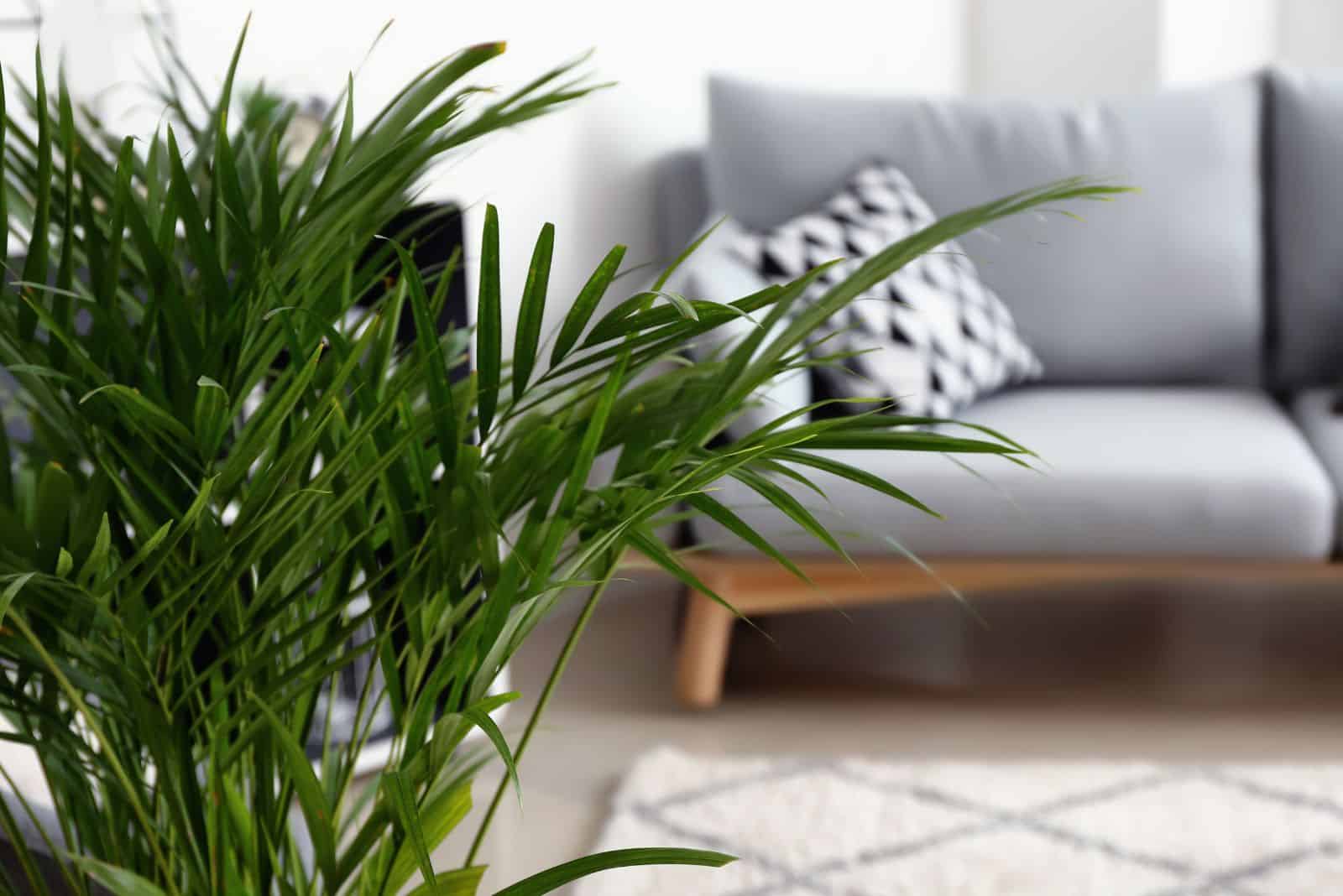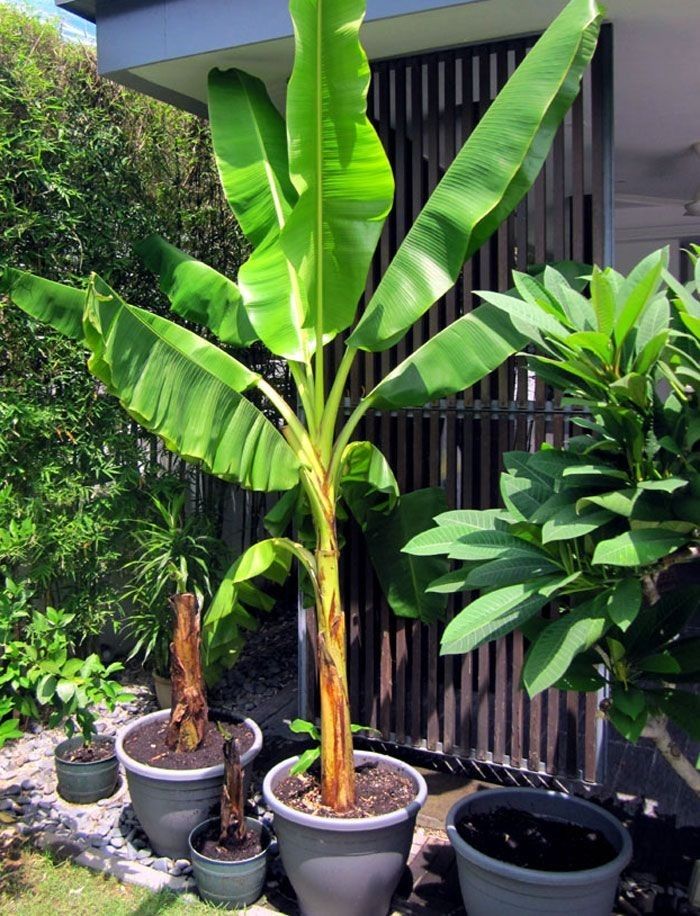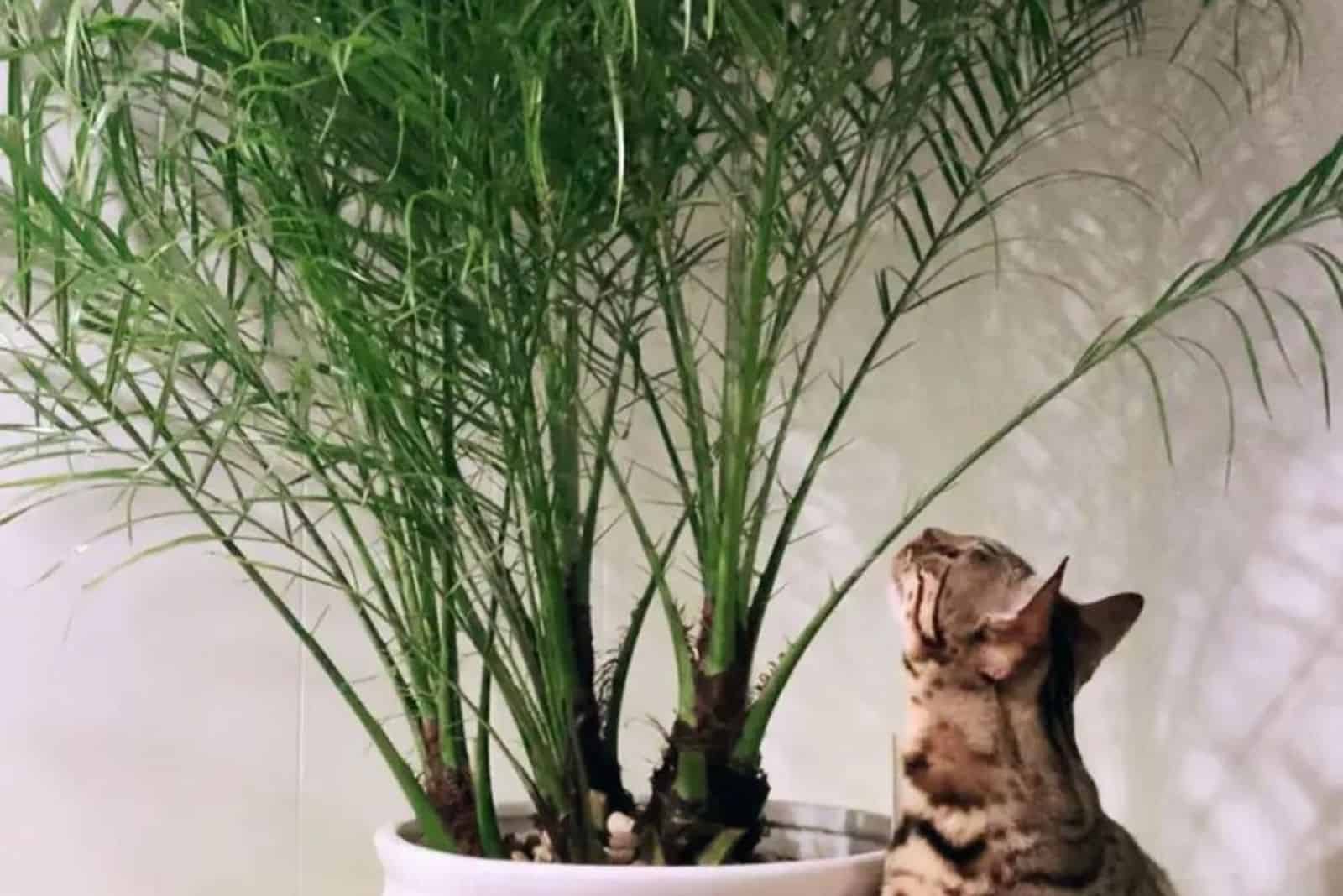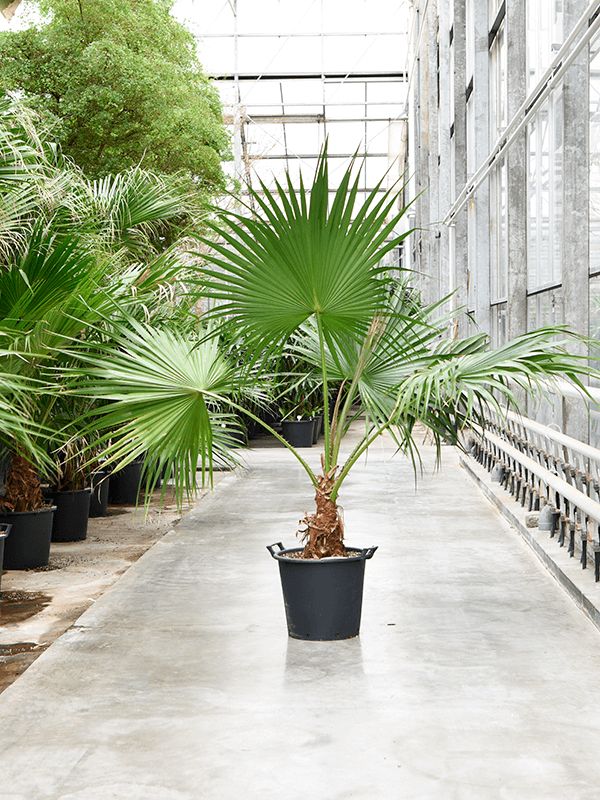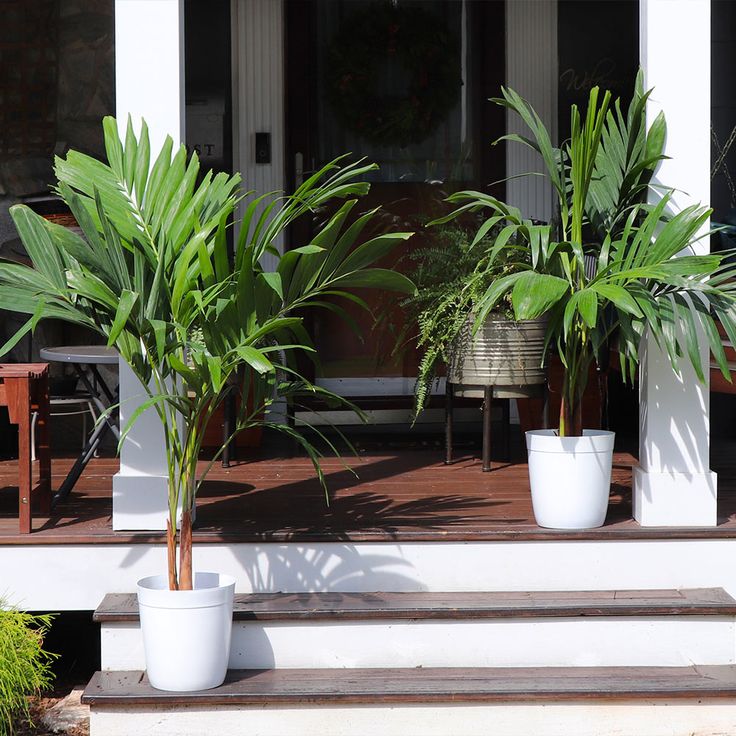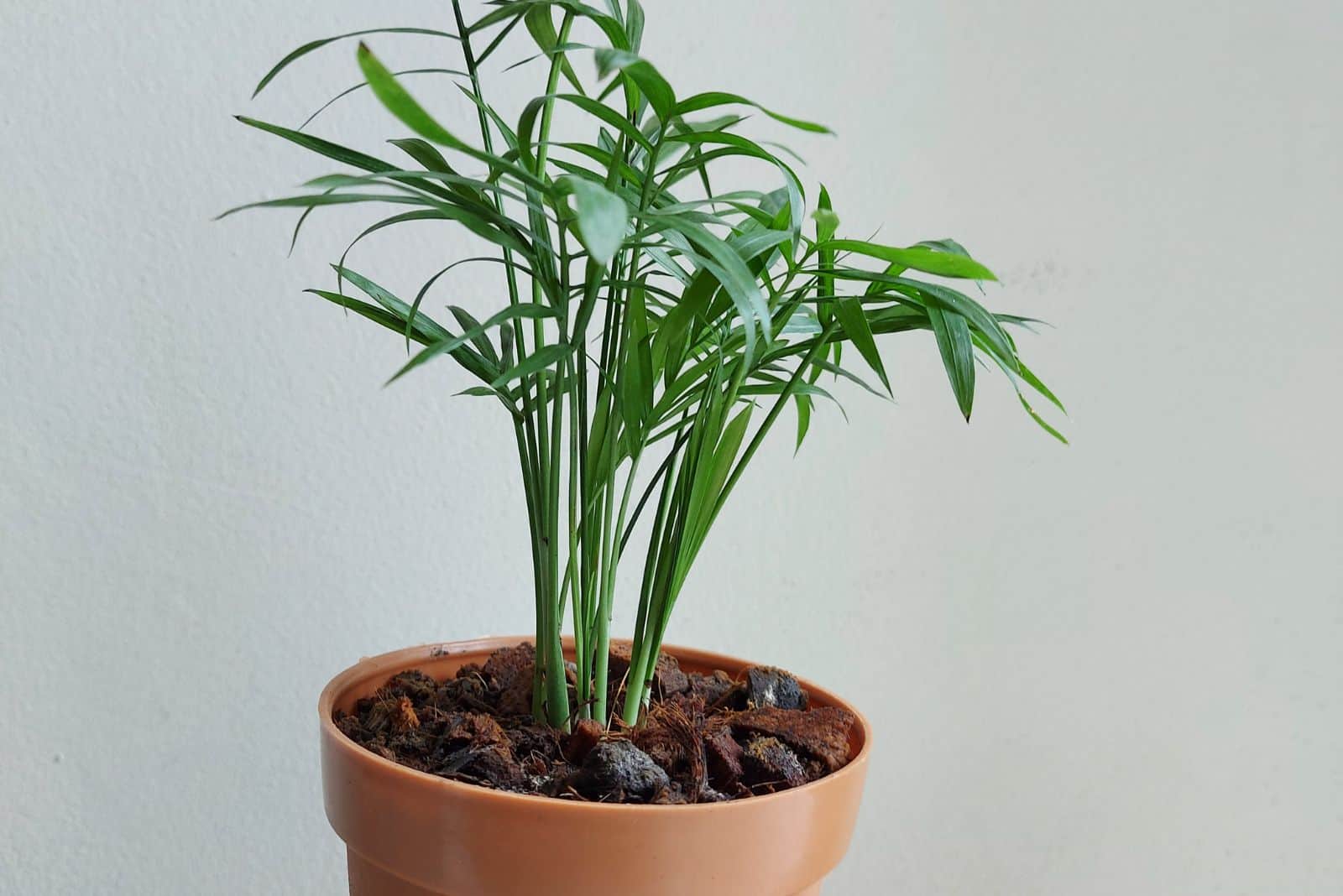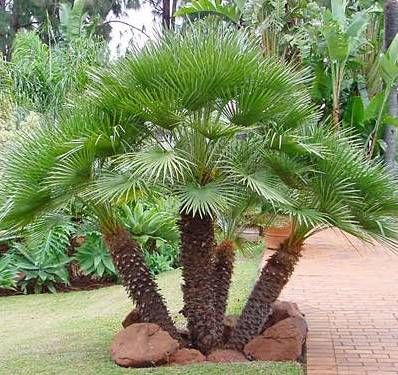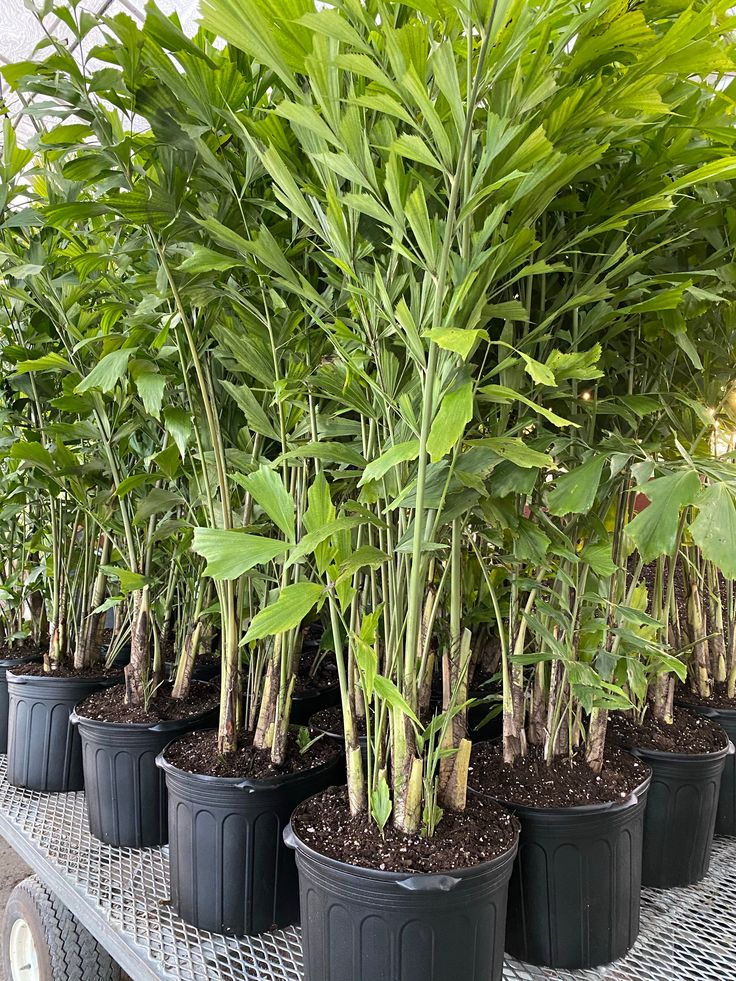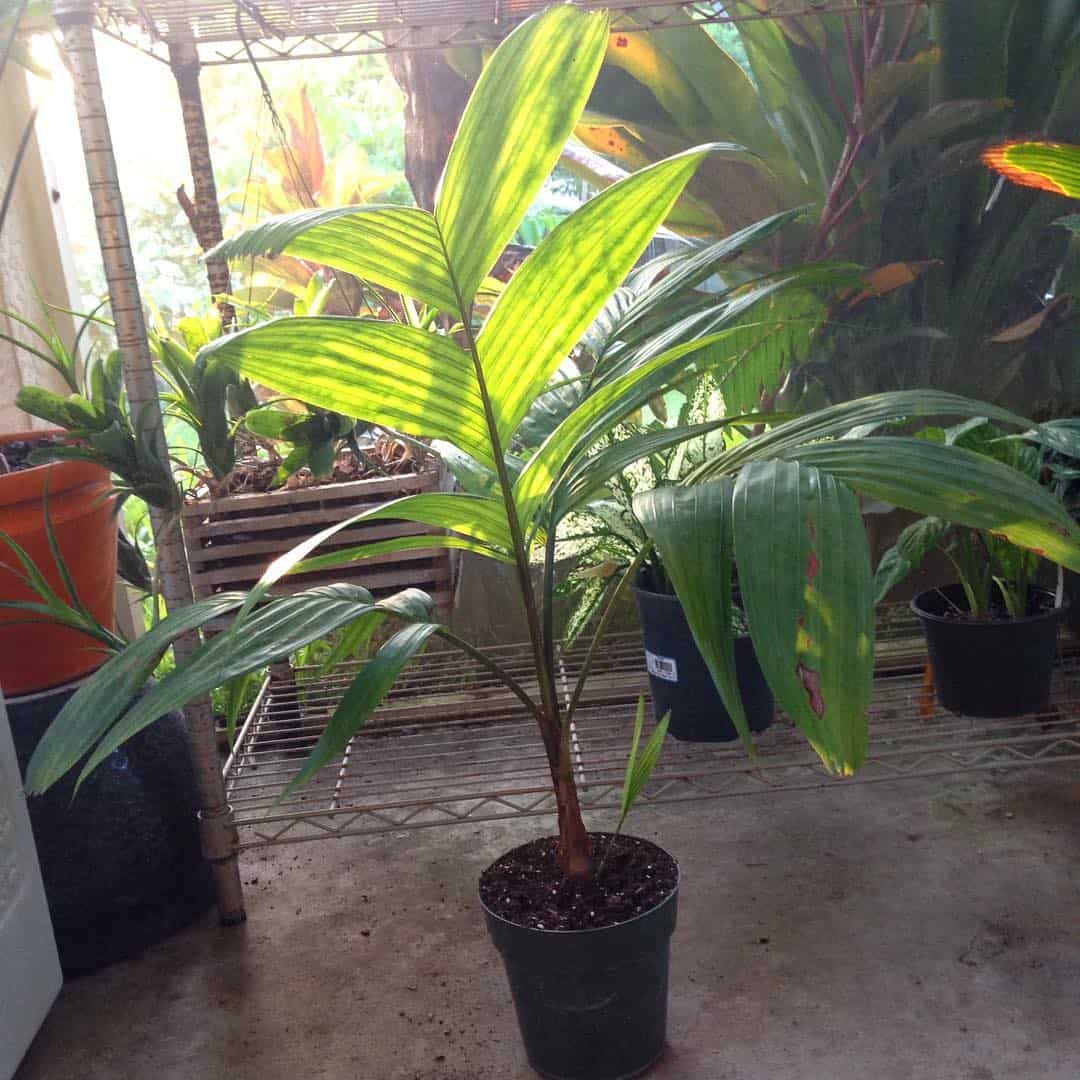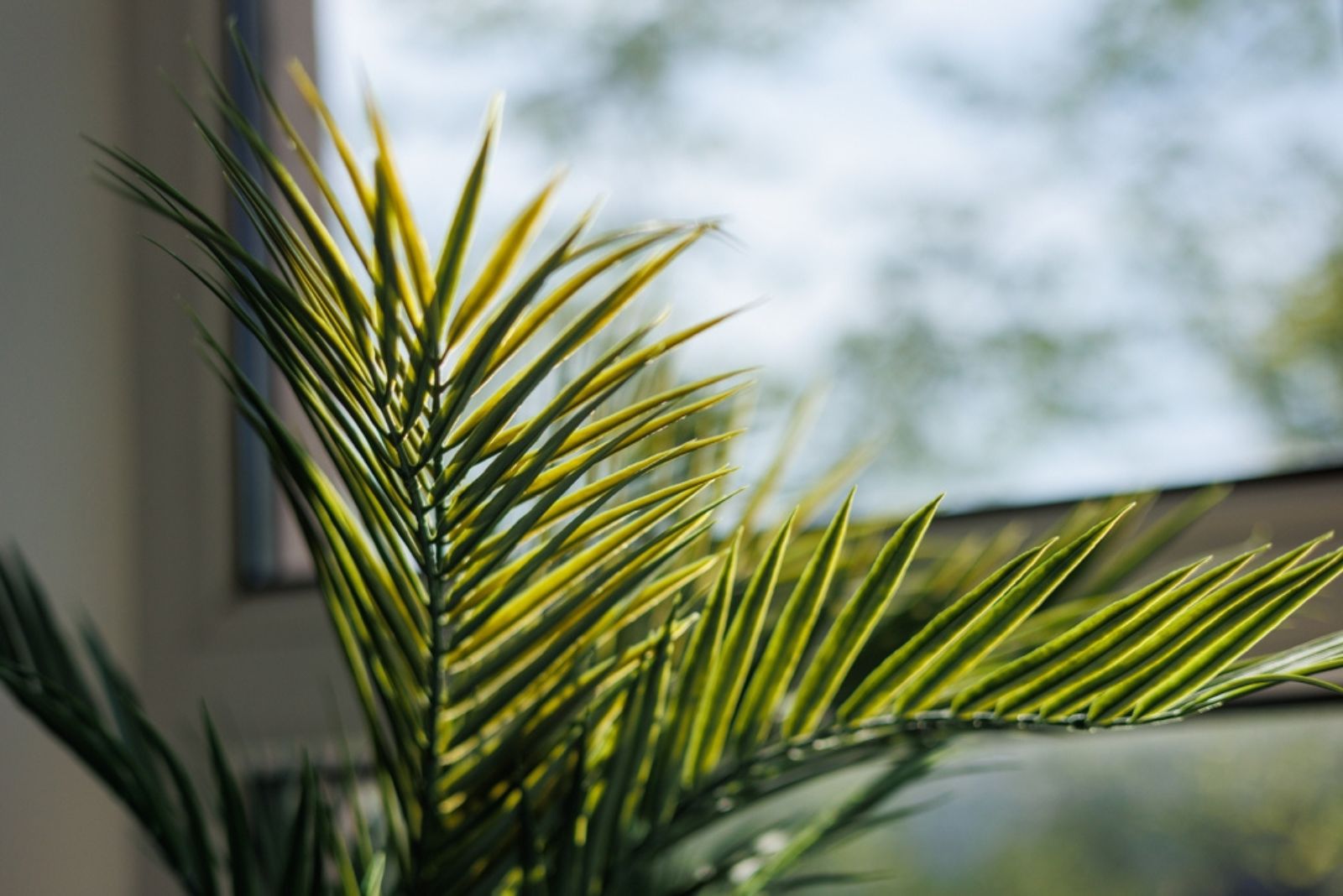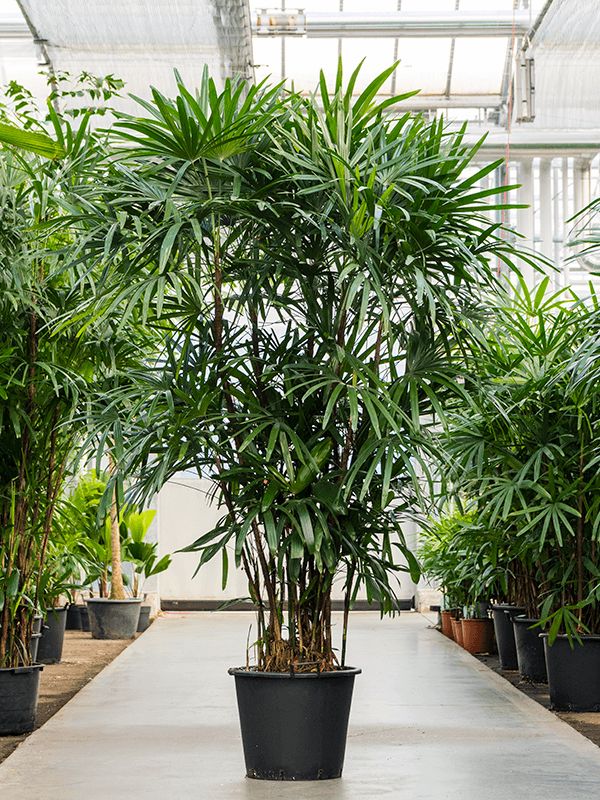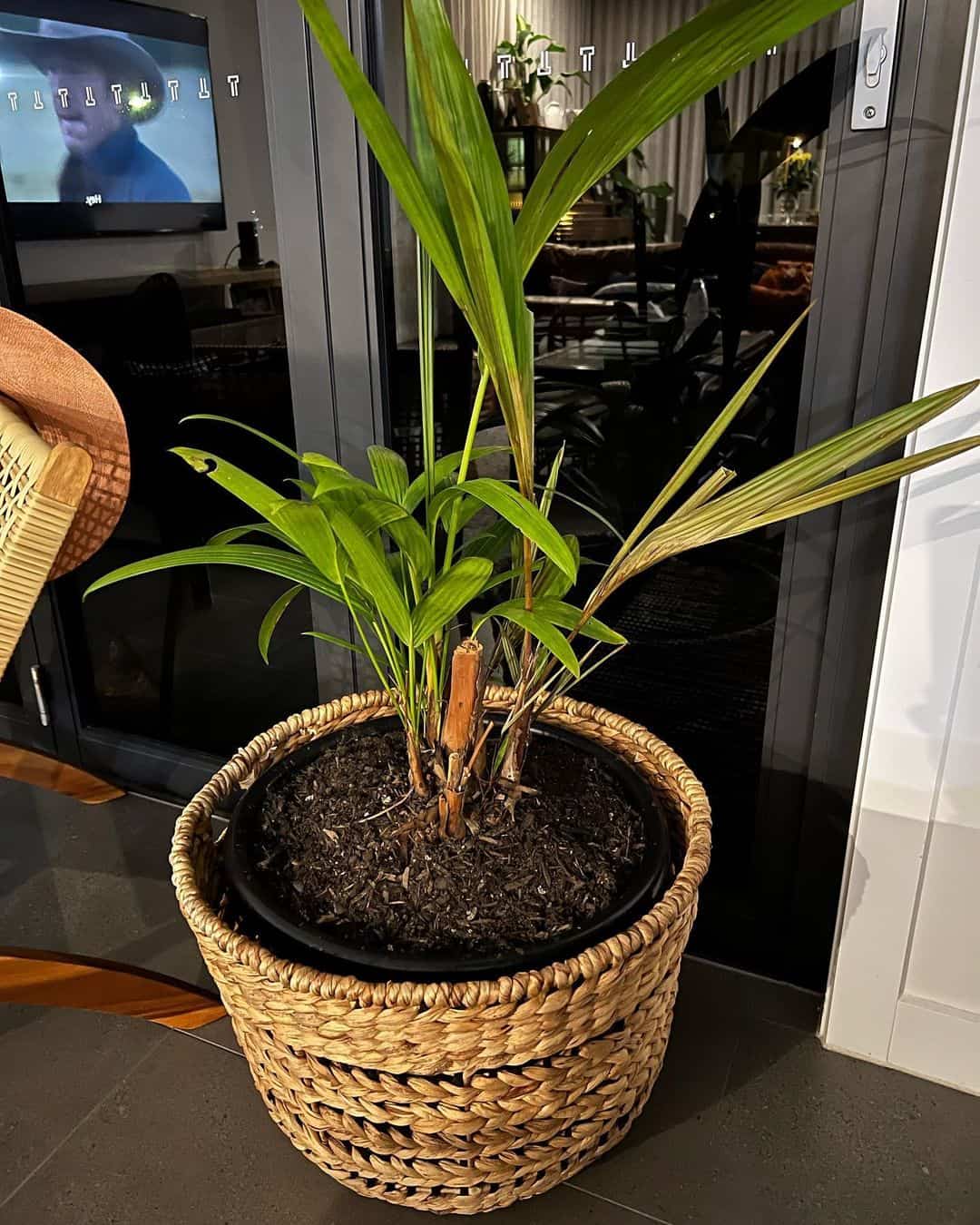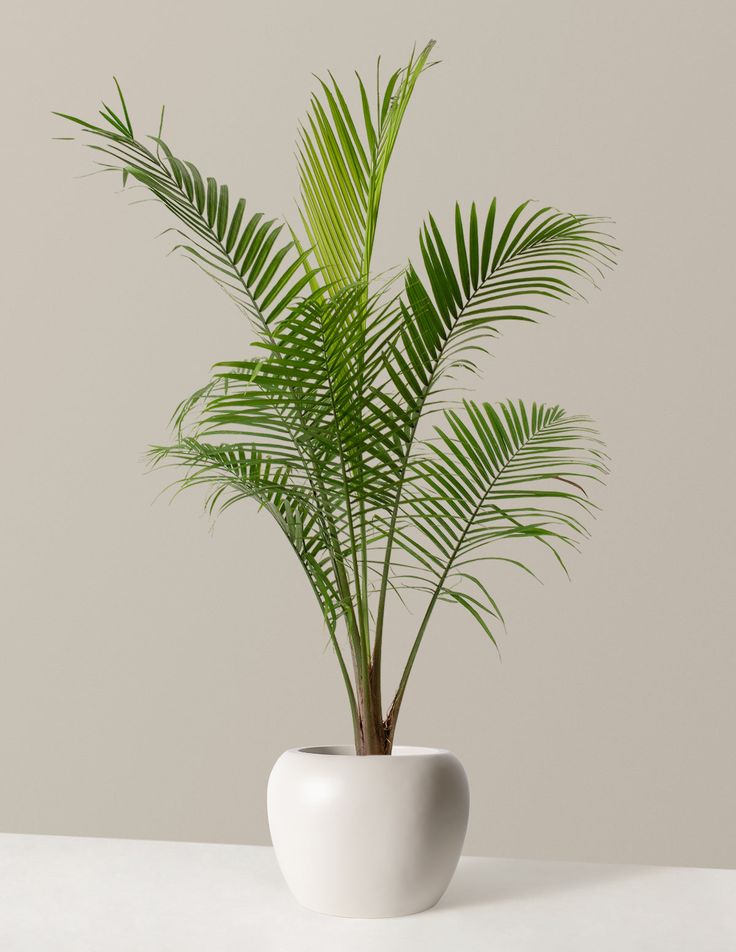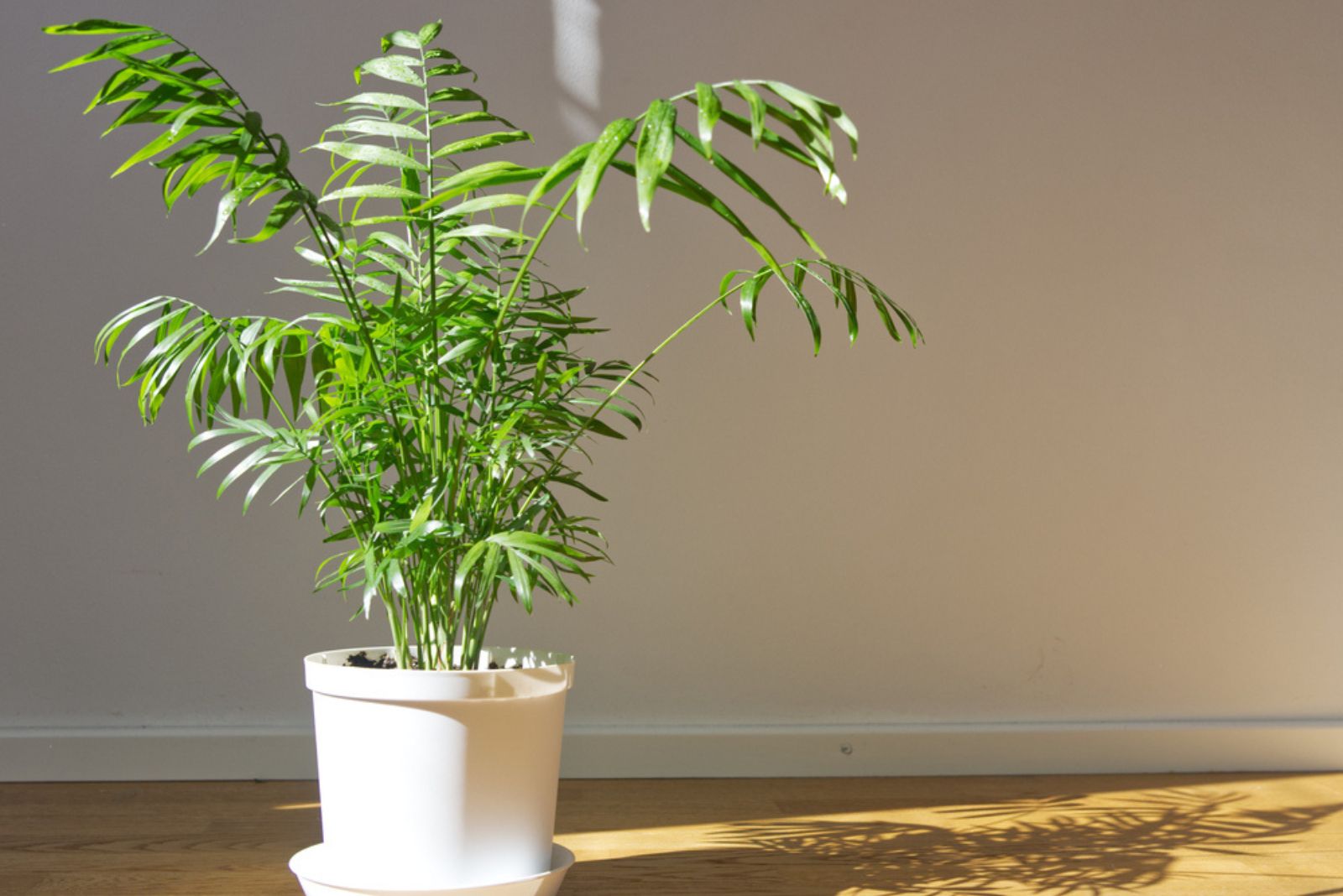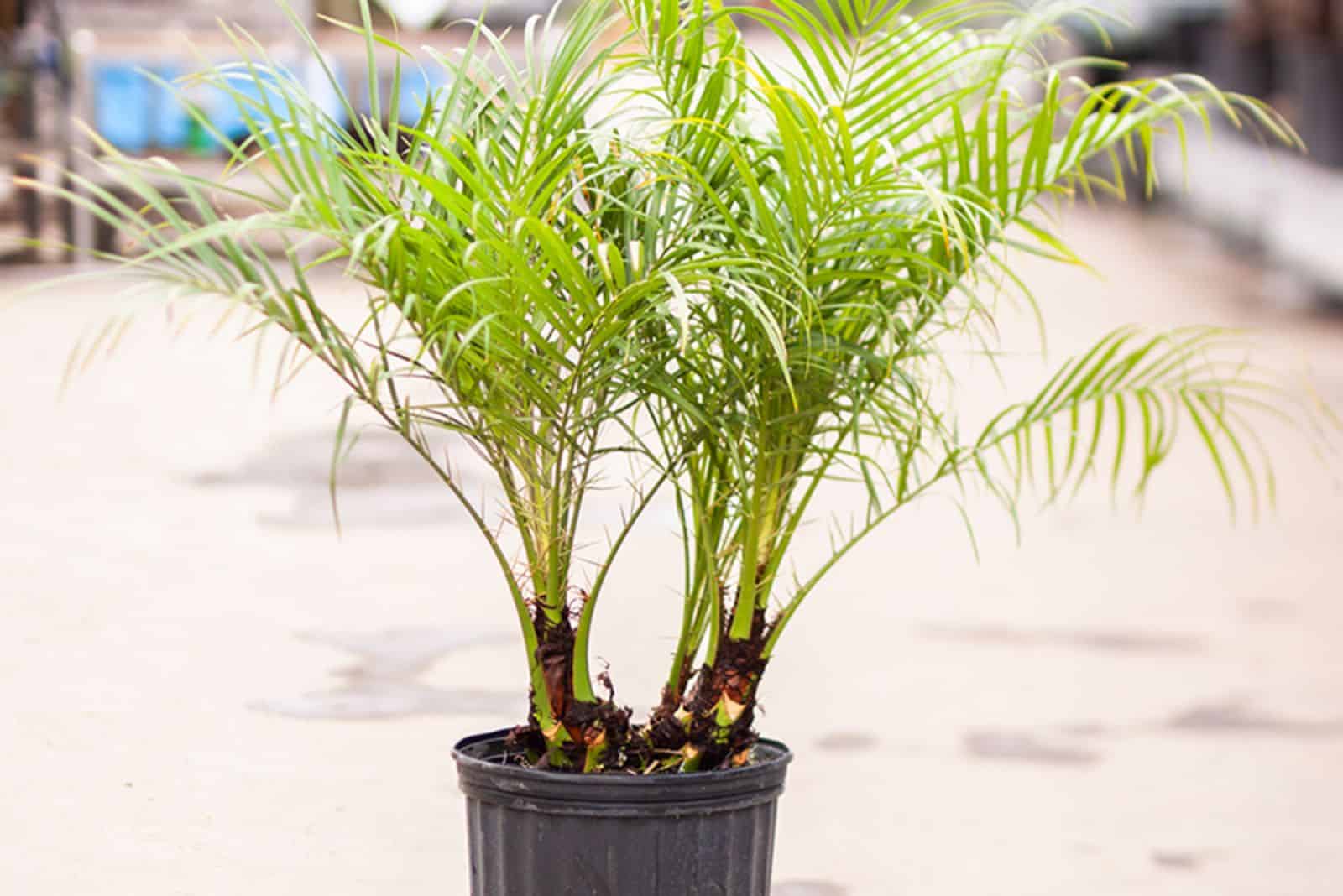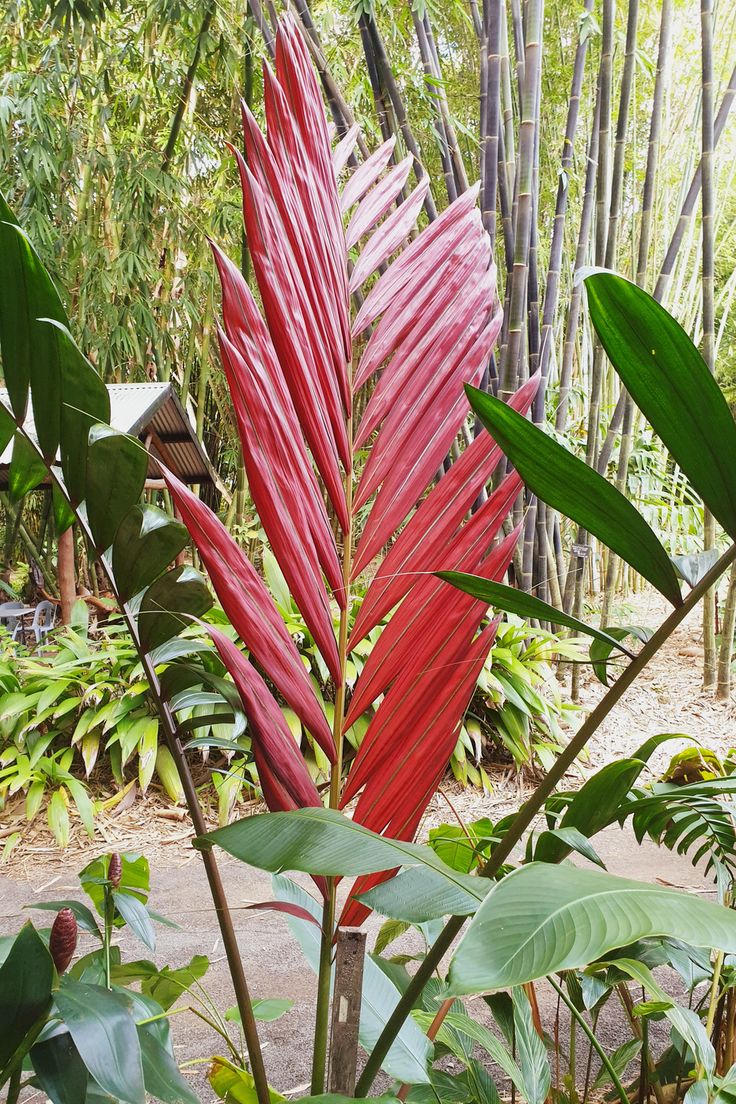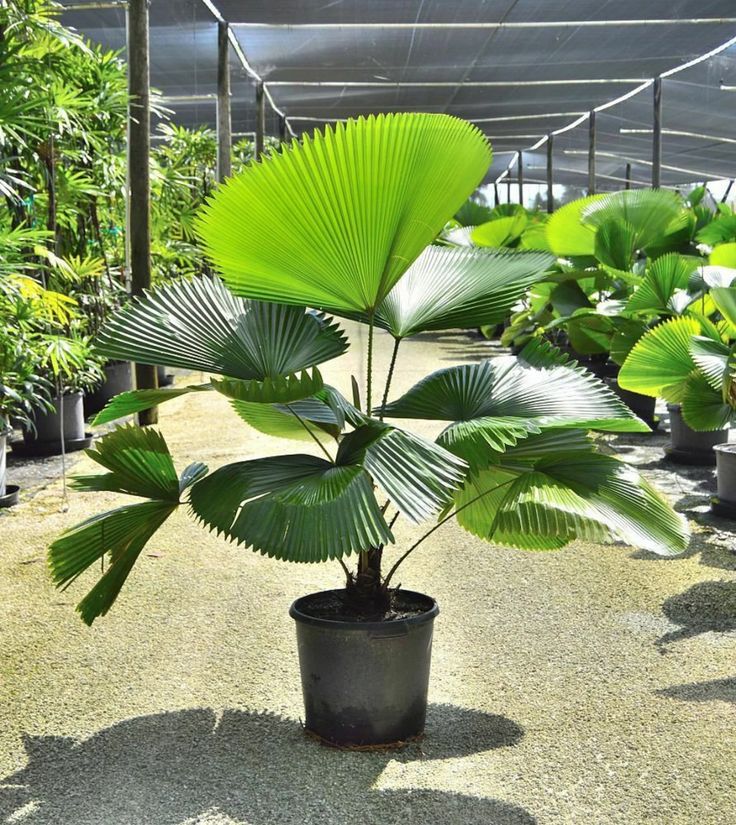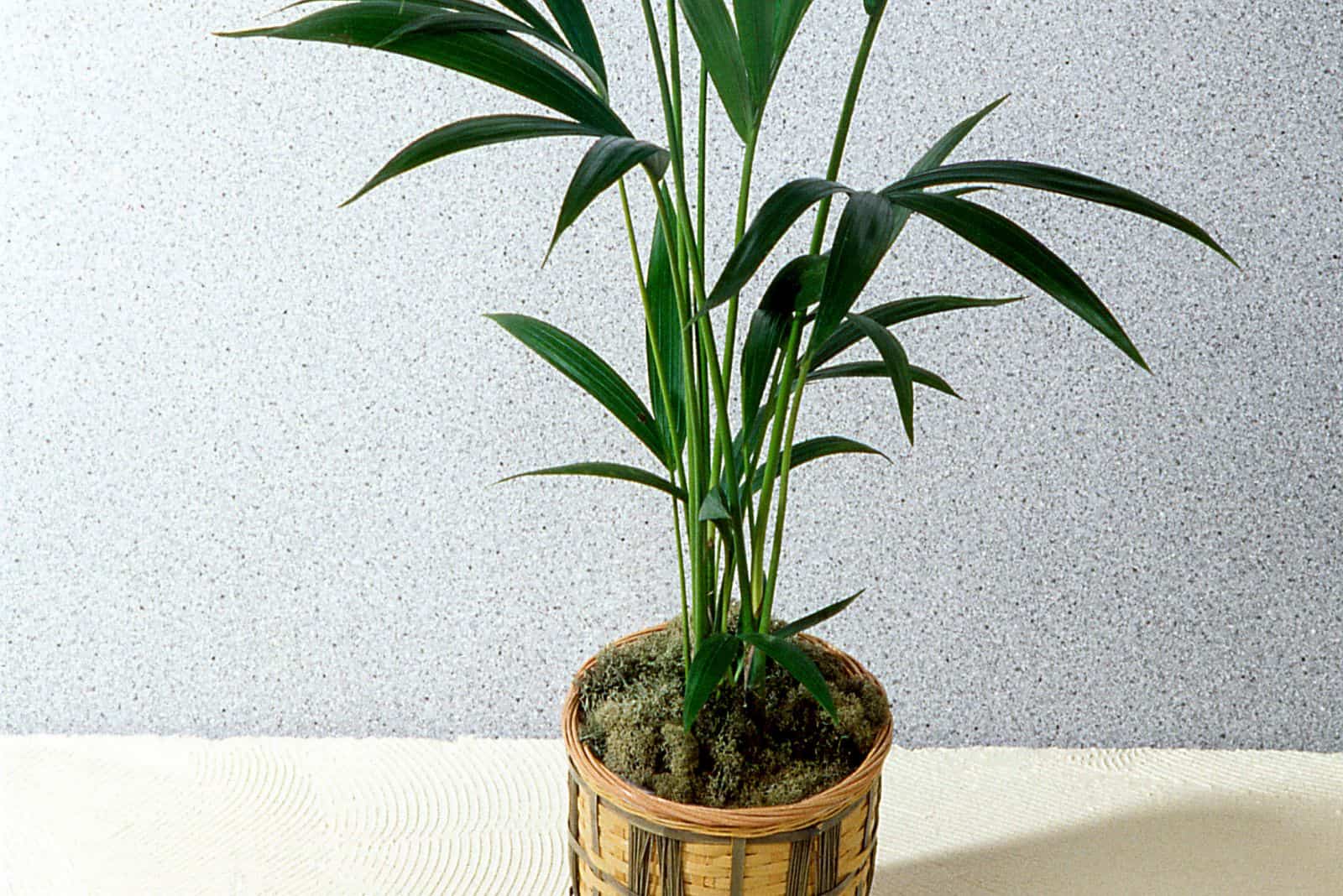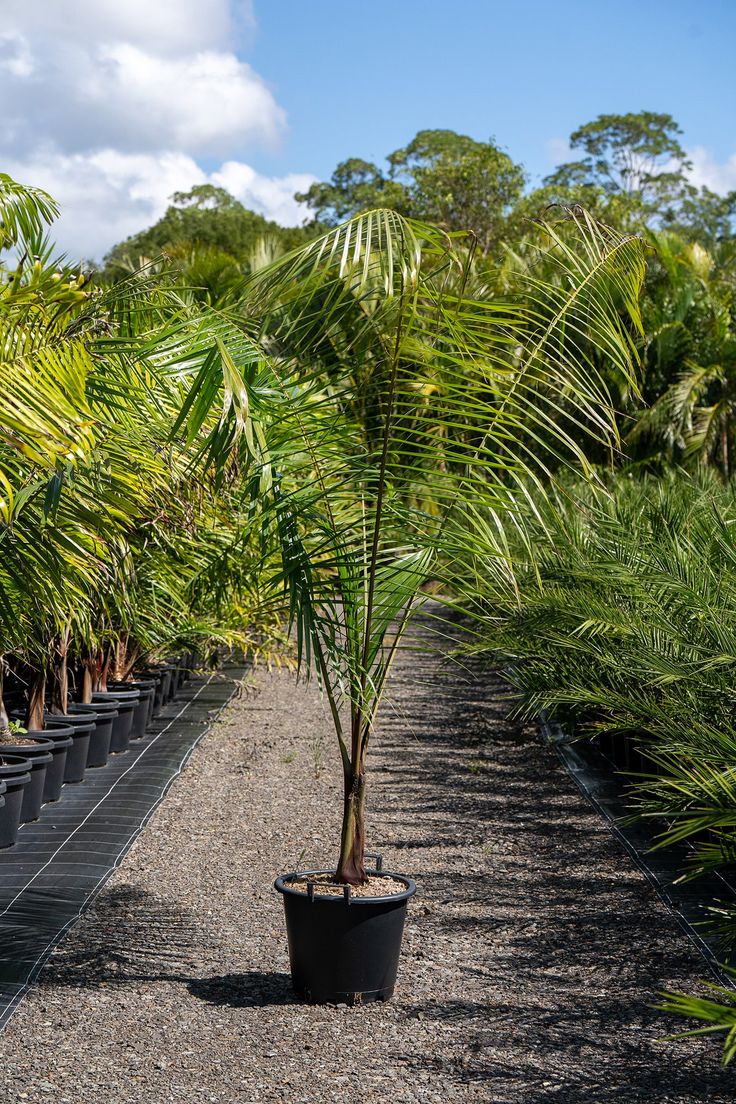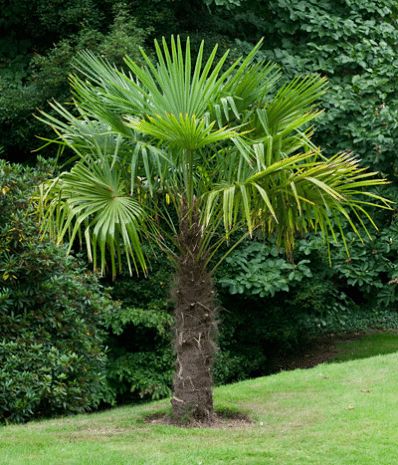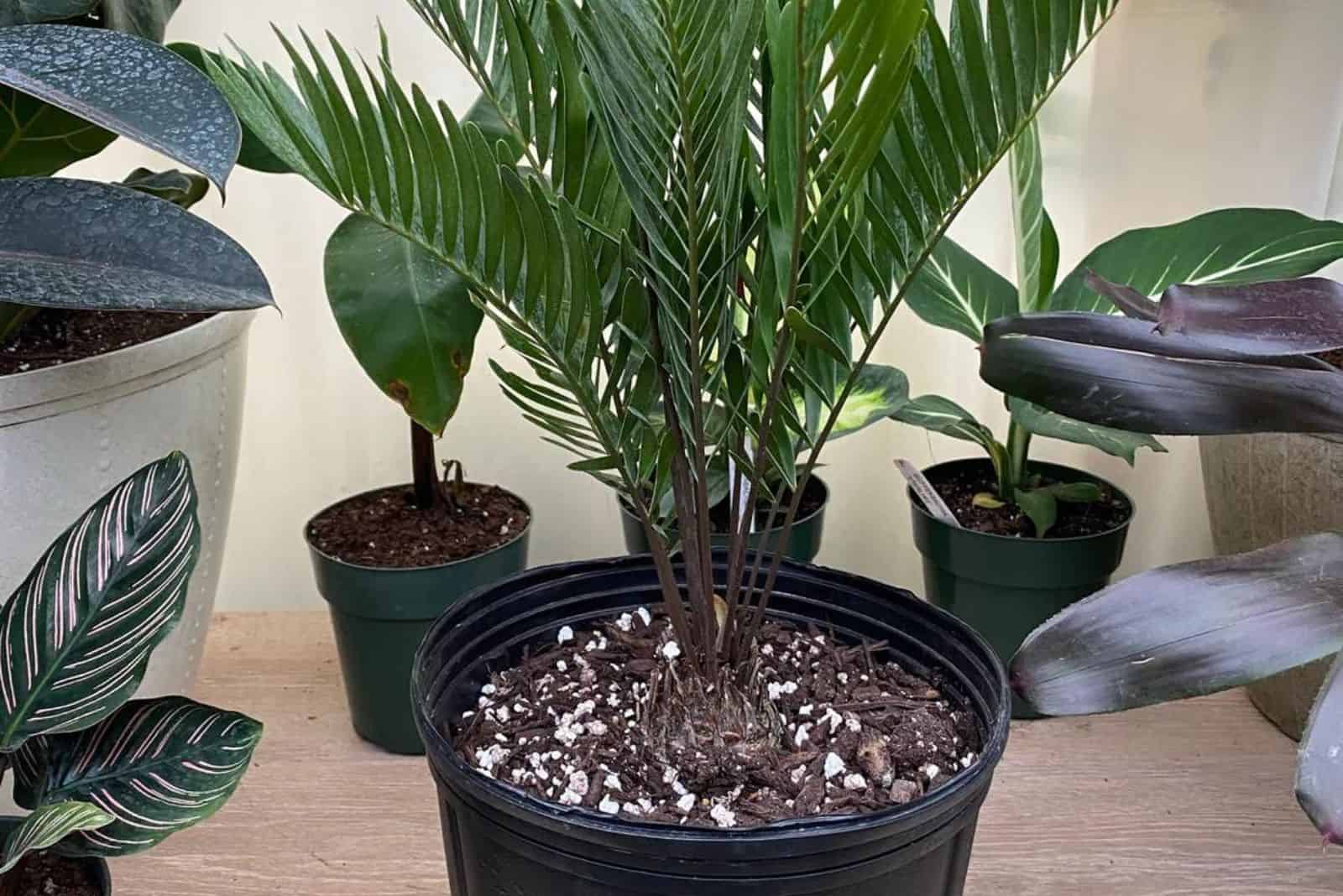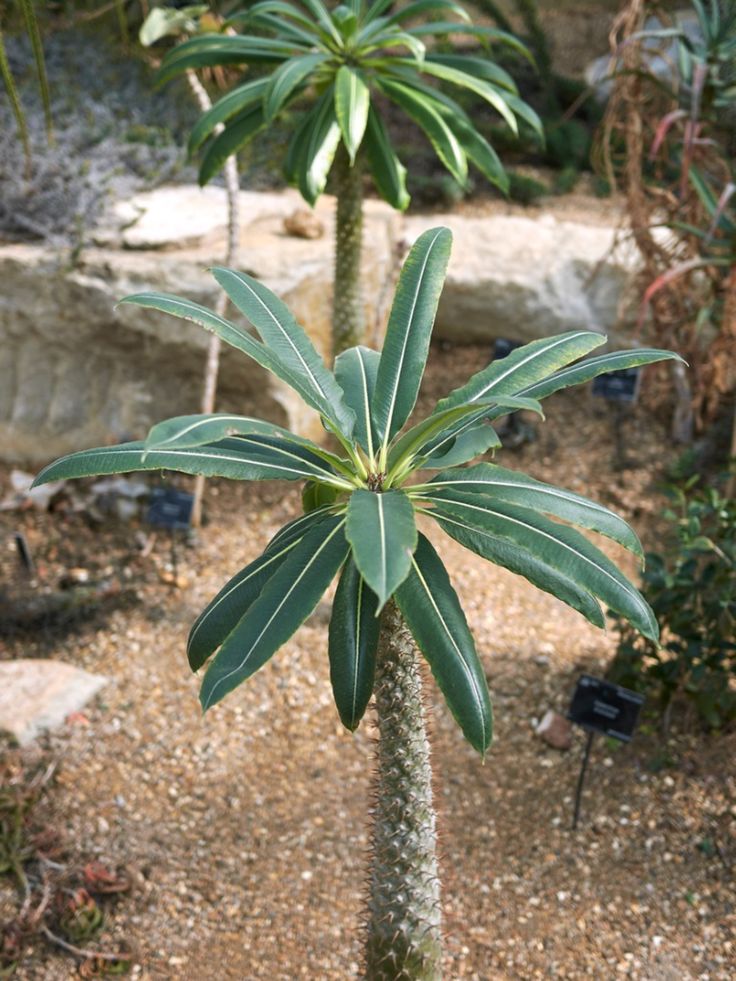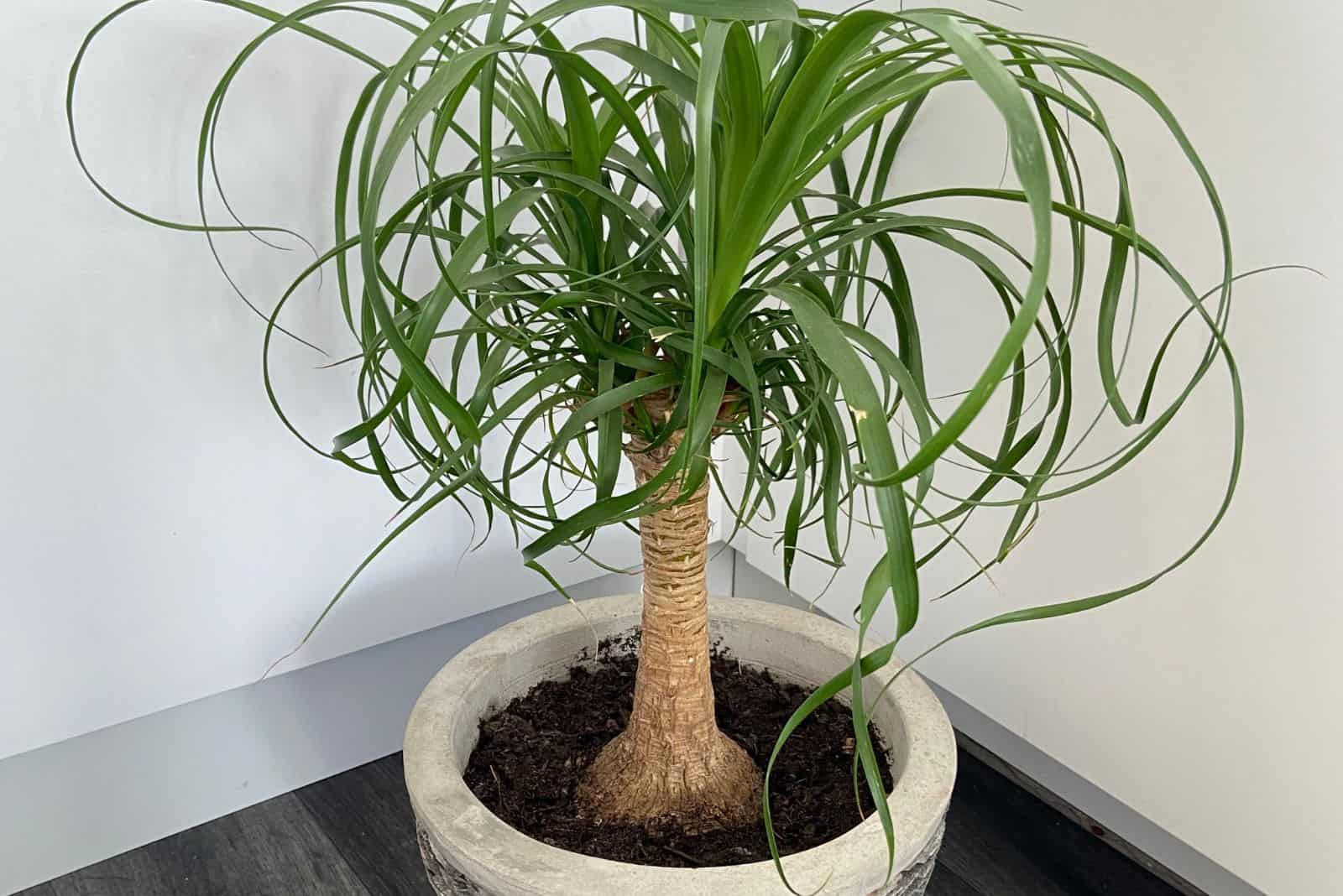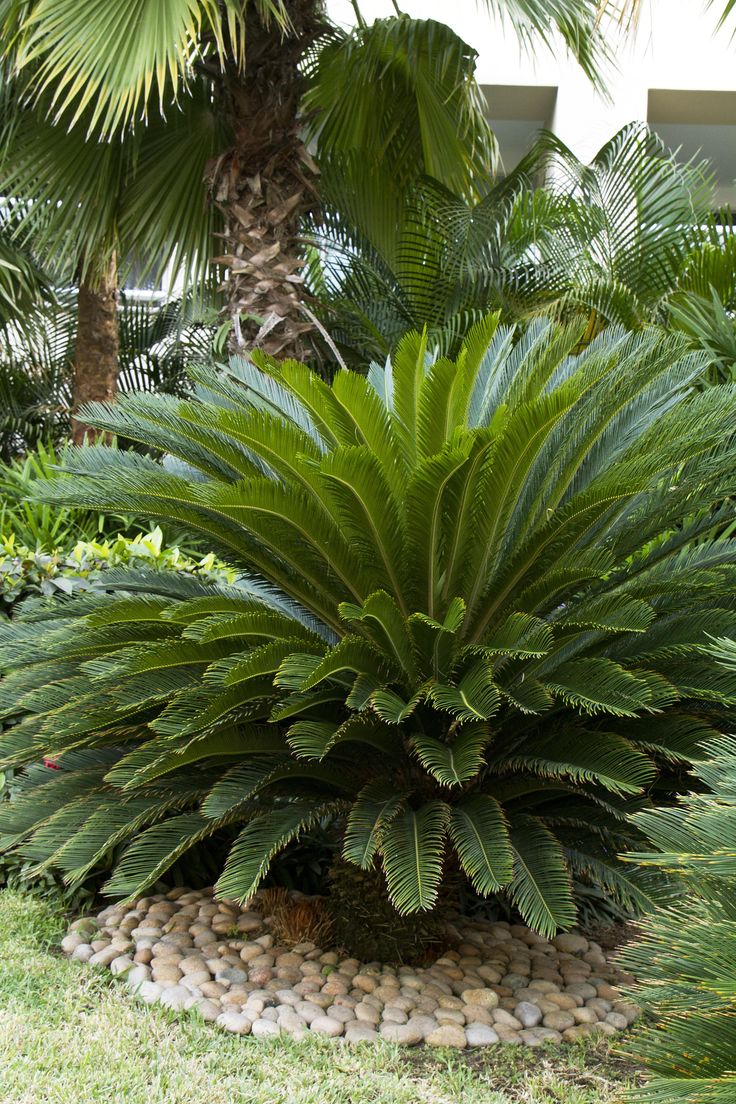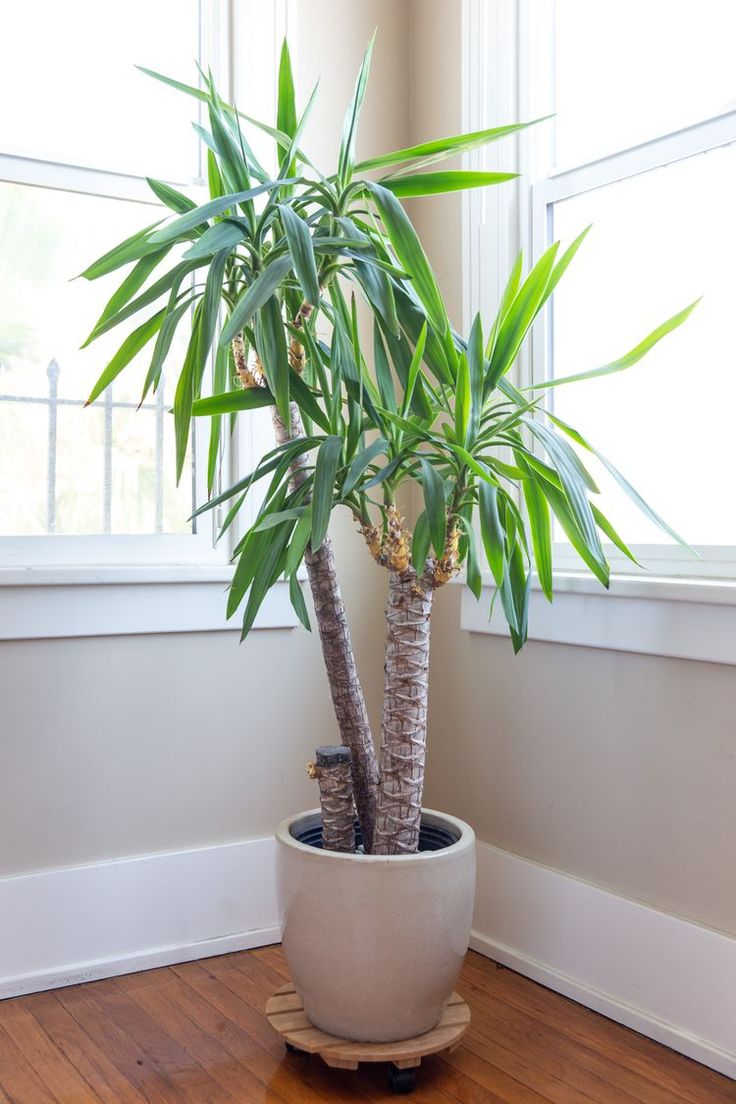Palm trees are one of the quickest ways of introducing more texture into your indoor design, which is why there are so many decorators and gardeners who use them.
And yet, there are so many species that it makes it difficult for us to choose!
Luckily, I’m here to navigate you through the various types of indoor palm trees and present my favorite options.
It’s also important to bear in mind that not all palms are true palm trees, and I’ll mention some of these that you can use to transform your home decor.
Let’s get started!
True Palm Trees
In this section, I’ll talk about some popular palm trees, examine their most prominent features, and give you a tip or two about caring for them.
And since these are all true palms, you can apply the same solutions if you notice that your palm tree is dying.
1. Areca Palm
The canes of this palm tree resemble bamboo, so it’s not surprising that one of its common names is the “bamboo palm”.
They grow in clusters and have a golden hue intertwined with pale green. The beautiful fronds rise from the stems and create a deep green crown streaked with yellowish midribs.
This plant reaches a maximum height of eight feet indoors, but it’s usually much smaller than that, making it a perfect addition to your home.
It requires indirect sunlight, water once the top portion of the growing medium dries out, well-draining soil, and warm temperatures to thrive.
2. Banana Palm
The golden and beige, fleshy stems make the banana palm perfect for any setting. And once it produces its large, signature leaves, you won’t be able to get enough of it.
It doesn’t grow in clusters and it won’t produce banana fruit when grown indoors, but that doesn’t mean it has nothing to offer. Some cultivars produce purple-red foliage that turns green as they mature, although the pure emerald color is an attraction in itself.
It usually reaches between 2-6 feet tall when grown indoors, but there are some dwarf species that can be smaller than this.
Water it well during hot summers, expose it to indirect light and high humidity, plant in a well-draining growing substrate, and maintain warm conditions.
3. Cat Palm
The cascading form of this species earned it the name “cascade palm”, although you might also know it as the “cat palm”.
It produces clusters of purely green stems topped with curvy, glossy fronds.
When grown indoors, it doesn’t exceed a height of three feet, so it’s perfect for smaller locations.
Finally, follow the cat palm care guide to keep this plant healthy. Expose it to direct sunlight in the morning and some shade in the hot afternoons. Other key requirements include moist and well-draining soil and mild temperatures.
4. Chinese Fan Palm
This is one of my favorite indoor palm trees as it produces large, fan-like fronds. And to top all that, the leaves hang downwards, which creates an overall fan effect.
It has a brown stem that creates a calming contrast to the deep green palmate leaves.
The Chinese fan palm can get quite tall indoors, up to 8 feet, but it blends in perfectly with a high ceiling and wooden cabinets.
Place it in bright light (direct sun is okay in early morning and late afternoon), plant it in a well-draining medium, and water it once the top portion of the soil dries out.
5. Christmas Palm
The thin, grayish stems of this palm tree make me wonder how they can support such a large crown. And yet, that’s what you get with this plant.
The large dark green palmate leaves feel like a natural extension of the main stem, and their cascading character makes them all the more desirable.
These plants are tall and can extend up to 10 feet in the air, so make sure you have enough space to promote their upward growth.
They need mild conditions, well-draining and sandy soil, water once the top part dries out, and direct sunlight in the morning or late afternoon. They prefer some light shade during the hottest time of the day to prevent sunburns.
6. Dwarf Bamboo Palm
Dwarf palm trees are one of the best things that you can include in your interior design because they add much to the space, are easy to care for, and don’t need a lot of room to grow.
This particular variety has bright green stems and foliage, so it’ll add just enough color to make your space pop.
The fronds have narrow and lengthy leaflets, giving this entire plant a lacy look.
The dwarf bamboo palm grows between 3-5 feet tall, making it perfect for all settings.
And if you want to avoid dealing with yellow palm tree leaves, be consistent and follow its care guide. Provide it with indirect sunlight, water it when the topsoil is dry, place it in warm temperatures, and don’t forget about the quick-draining substrate!
7. European Fan Palm
This Chinese fan palm cousin looks equally stunning, but is more hardy and can survive much harsher conditions.
Its thick and textured stems remind us of coastal palm trees, but its dense fronds tell a different story.
The blue-green, long and narrow leaflets sometimes contain silvery undertones and are shaped in fan-like structures, giving this plant an oriental vibe.
What makes it perfect for indoor settings is its compact size, which doesn’t exceed 4 feet!
Let the top of the soil dry out in between waterings, keep it in a well-draining substrate, and expose it to 6-8 hours of direct light each day.
8. Fishtail Palm
The fishtail palm has unique fronds and can be a centerpiece of your home if you place it in a suitable location.
The leaflets of this plant are wide and they spread as they move further away from the petiole, just like fish fins.
Its clumping stems can also bear hanging stems with countless purple flowers, which can turn into a plum or ocre-colored, berry-like fruit. Sadly, blooming rarely occurs indoors, but we still have their fronds to look forward to.
The fishtail palm gets around 6-10 feet tall indoors, and goes perfectly with vintage decor with lots of natural material of a white and pastel green color.
It flourishes in bright indirect light, warm conditions, and humid environments, so don’t forget to meet these requirements. To support its growth, plant it in peat moss or some similar medium and fertilize it regularly. (1)
Finally, water your fishtail palm tree once the top portion of the substrate is dry.
9. Ivory Cane Palm
The slender stems of this palm tree grow in clumps, giving it a fuller shape. They’re also beige and sometimes splashed with reddish hues, offering a calming contrast to the pure green fronds.
The feather-shaped foliage grows upward until it starts cascading down, giving off a tropical feel. These fronds sometimes hide tiny pink flowers, which give way to berry-like fruit that’s red at first and black when mature.
However, flowering rarely occurs if you keep this plant indoors, but don’t be disappointed; everyone’s after its leaves, after all!
The ivory cane palm grows up to 10 feet indoors, although it’s usually smaller than that.
Water it regularly to prevent drought stress, place it where it can get direct sun in the morning, expose it to high humidity and mild temperatures, and plant it in a well-draining soil.
10. Kentia Palm
Another palm tree that I find incredibly easy to incorporate into my decor – and care for – is the kentia palm.
Clumping, bright green stems extend upwards and transform into dark fronds, which remain green even during dormancy.
This plant can get anywhere between 6-10 feet tall indoors, so make sure to place it somewhere it’ll have room to spread.
It needs indirect light, warm temperatures, high humidity, a quick-draining medium, and water approximately once a week. Make sure to irrigate it only when the top portion of the growing medium dries out, or you’ll quickly notice signs of an overwatered palm tree, such as leaf discoloration, droopiness, and root rot. (2)
11. Lady Palm
The lady, or rhapis palm, bears wide, finger-like leaflets that grow from all over the stem, not just the top.
Its stalks are brown, and even though the plant is not the fastest grower, you still won’t have to wait too long before the stems start disappearing beneath the foliage.
The lady palm doesn’t get taller than 6 feet when grown indoors, making it suitable for most locations.
Keep this plant in a humid environment and water it about once a week, or less if it takes a while for the topsoil to dry out. Expose it to bright indirect light, warm conditions, and plant it in a fast-draining soil.
12. Lipstick Palm
If you really want to add color to your indoor decor, then this is the plant for you. The gradient color effect on the stem starts from green, blends into orange, and ends up bright red, which makes this plant stand out.
The bottom side of the leaf petiole is also red, while the top is more in keeping with the bright green color of the fronds.
The lipstick palm usually gets around 10 feet tall indoors, although it can reach a height of 50 feet when grown in its natural habitat.
Plant this species in a quick-draining potting mix, expose it to high humidity and mild temperatures, and give it bright light (preferably direct sun in the morning). Finally, water the lipstick palm frequently when growing them in containers.
13. Majesty Palm
This variety looks similar to the cascade palm, although there are some differences between the cat and majesty palm that make it easy to tell them apart.
What I love about the majesty palm are its feathery, bright green fronds rising from the main trunk and cascading once they reach their peak.
It is a tall plant that can get up to 10 feet tall and 5 feet wide indoors, so make sure to find a suitable place for it.
I keep my majesty palm in indirect light and water it whenever the top portion of the growing medium dries out. I planted it in a palm soil which has excellent drainage, and I feed it with classic plant food 2-3 times a year.
14. Parlor Palm
This plant looks a lot like the areca palm. However, some differences between the parlor and areca palm, such as their size, shape, and color, help us distinguish between the two.
When it comes to the parlor palm, the first thing you’ll notice are delicate and feathery, dark or light green foliage.
And the other thing that makes these plants attractive are the multiple green stems that rise upward from the pot – although uni-stemmed parlor palms aren’t uncommon either.
This palm tree usually reaches 2-6 feet indoors, making it perfect for small and large rooms alike.
Keep it in bright indirect sunlight and water it 2-4 times a month, but always check whether the topsoil is dry since that’s the best indicator it needs irrigation. Keep it in warm temperatures, humid environments, and plant it in a fertile and loose, well-draining medium.
15. Pygmy Date Palm
This single-stemmed palm tree is perfect for indoors and will bring a dash of the tropics to your home.
Its brown and textured stem gives more character to the smooth surface of dark green fronds. The lacy leaflets are narrow and long, while the entire foliage reaches the top and spills over the imaginary edges.
Indoors, it gets to a height of 5-6 feet and looks perfect in tall, dark planters in a modern decor.
The pygmy date palm requires regular feeding and fertilizing until it establishes in order to grow tall and green. Keep them in a location with bright indirect light, plant them in a loose and fertile, well-draining soil, and place them in moderate-to-high humidity levels.
16. Red Feather Palm
Want to add a dash of color but flowering plants seem too much for your idea of indoor design? A red feather palm is the perfect alternative!
This plant has red and dark green fronds rising from a single stem. The leaflets are also a bit thicker than in other palms and turn narrow at the top, giving them a feathery appearance.
This red palm might seem a bit too much for indoors since it reaches a height of about 10 feet, but a tall, dark container and modern decor would do it justice!
It thrives in humid environments, well-draining soil, bright light with some shade during the hottest time of the day, and deep watering once the topsoil is dry.
17. Ruffled Fan Palm
When I first saw this palm tree, I couldn’t believe it was real! The circular fan-shaped fronds rise towards the top of the plant, creating unique patterns along the way.
A single dark brown stem supports these glossy green fans and looks amazing in white-gray wicker baskets.
It usually gets around 6 feet tall when grown in a container, which makes it perfect for an indoor display.
To make it as luscious as possible, you should follow these ruffled fan palm care tips to help get you there. Keep it in indirect light, warm conditions, a humid environment, and plant it in a loose and well-draining soil. And, yes, water it whenever the top part of the growing medium gets dry!
18. Sentry Palm
The sentry palm is very similar to the kentia, although the former has a larger arch of cascading fronds.
Its dark green leaves grow from multiple stems and kind of look like thick blades of grass in my opinion!
The sentry palm typically grows to about 6 feet tall, and a golden pot, a window seat, and a side table are all it takes to really make it pop.
Water it once a week or whenever you notice the top is dry, plant it in a fast-draining substrate, and place it in a bright and warm location with high humidity levels.
19. Triangle Palm
The triangle palm reminds me of a peacock tail, although it’s not that colorful. It has a single stem and produces fronds from three separate points in the form of a triangle.
The feathery, blue-green leaves have brown petioles which connect to the brown or grayish stem.
The plant usually grows between 25-35 feet tall, but it won’t be able to reach that height if you plant it in a container and grow it indoors – which is the goal, after all. (3)
Provide it with at least 6-8 hours of sunlight each day and water it once the growing medium dries out (although established plants are drought-tolerant). Plant it in a well-draining substrate and expose it to warm temperatures with moderate-to-high humidity.
20. Windmill Palm
The fan-shaped fronds don’t bend all the way down like with so many other palm species. Instead, they extend upwards and to the sides, giving this plant a windmill shape.
What makes it even more attractive is its thick stem covered with hairy black fibers. And since the leaves aren’t that dark, they form a beautiful contrast and make it a statement piece of your decor.
The plant is quite tall, but it reaches 6-8 feet indoors over a long period of time. Simply place it in a black or golden container and move it closer to a window to see it shine.
Plant it in a fast-draining medium and water it whenever the topsoil is dry, which may be 2-3 times a week if the plant is young and the weather is scorching. Provide it with direct sun in the morning or late afternoon and some shade around midday. For the best results, keep the humidity levels above 50% and the temperatures warm!
Palm Trees That Aren’t Real Palms
We often refer to certain plants as palm trees even though they’re not real palms. For instance, the sago palm is actually a cycad, and the ponytail palm is really a succulent.
Here we have five popular indoor plants that can give you the palm tree vibe!
1. Coontie Palm
This woody cycad isn’t a real palm. (4)
It resembles a mashup of a fern and palm tree in the best way possible. Its soft and deep green leaves grow upwards, although the plant produces many offshoots which eventually give it a rounded look.
Its stem is thick, short, and rounded, which only gives the plant more character.
This cycad shrub isn’t that tall and usually reaches a height of 2.5-3 feet, making it perfect for any room.
When you examine the coontie palm care guide, you’ll notice how easy it is to tend to it. Simply provide it with indirect light, mild temperatures, a well-draining substrate, and occasional watering.
2. Madagascar Palm
Another indoor tree that looks like a palm, but isn’t, is the Madagascar palm. This plant is actually a succulent with cactus-like needles spread all over its grayish trunk.
But what makes gardeners fall in love with this plant is its leathery foliage that protrudes from the top. Its dark green color streaked with white midribs brings peace to even the most anxious growers.
The plant is quite tall and can grow up to 20 feet. Luckily, its indoor height is between 4-6 feet, so you won’t have to worry about whether it’ll fit!
Finally, this madagascar palm tree care guide contains all the basics for tending to this plant, from keeping it in warm, bright locations and well-draining soils to occasionally watering it.
3. Ponytail Palm
The ponytail palm is another succulent that many decorators are crazy for. When I first saw this plant, I couldn’t look away from its hairy leaves and thick trunk.
The thin, light green foliage truly resembles a ponytail!
The ponytail palm reaches a height of about 6 feet indoors. It looks great in an emerald container combined with natural materials, or grown in a white planter.
What I love about this plant is that it doesn’t require too much moisture since it is a succulent, although I irrigate mine twice a month. Place it in a bright and warm location, and don’t forget to use a fast-draining medium.
4. Sago Palm
What makes this cycad popular are its palmate leaves which grow straight from the trunk with no side stems.
The shiny leaves are even more special because their margins roll downward, making this plant unique. And just when you think that’s all there is, the sago palm surprises you with its thick and textured trunk!
This plant usually doesn’t grow any taller than 2-2.5 feet indoors, so it’s perfect for all rooms, big and small.
Keep this plant in a well-lit location and don’t shun direct sunlight, although you should limit the exposure to morning or late afternoon sun. Water it once the top portion of the substrate is dry, plant it in fertile and well-draining soil, and keep it in warm conditions.
5. Yucca Palm
The yucca palm actually belongs to the asparagus family, so it’s not a real palm either. It’s also known as the giant palm lily due to the similarity of its leaves to palms and lily-like blossoms.
Its thick gray stems grow upwards, but they turn more and more brown as the plant matures. The soft, dark green leaves grow vertically when young, but then change and spiral downwards as they grow older, creating a so-called skirt.
When grown as a houseplant, the yucca palm is short and doesn’t grow more than 20 inches tall.
To care for it properly, expose this indoor tree to indirect light and warm temperatures, water it once the top part of the substrate dries out, and plant it in a fast-draining growing medium.
Final Thoughts
This article detailed 25 different types of indoor palm trees, although not all of them are real palms.
Regardless of their background, all these plants look amazing in indoor settings and can easily improve your decor.
Until next time!
References:
1. Habib, A. M. (2012). Effect of NPK and Growing Media on Growth and Chemical Composition of Fishtail Palm (Caryota mitis Lour). Life Science Journal.
2. Shawaqfeh, S. & Broschat, T. (n.d.). Howea Forsteriana: Kentia Palm. University of Florida, IFAS Extension.
3. Quintana, H. W., Andreu, M. G., Friedman, M. H., & McKenzie, M. (2010). Dypsis Decaryi, Triangle Palm. University of Florida, IFAS Extension.4. Johnson, W. G. (n.d.). Zamia Pumila L. National Seed Laboratory, USDA Forest Service.

